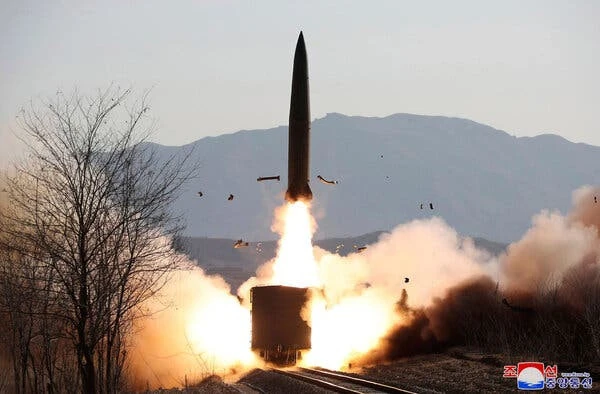
Russia used North Korean-made missiles to attack Ukraine twice
Russia used ballistic missiles from the DPRK in both large-scale attacks on December 29, 2023, and on January 2 this year
Defense Express reports.
The media has received confirmation from reliable sources that the ballistic missiles received by Russia from North Korea are likely KN-23 missiles. The revelation comes after analysis of the wreckage of a missile fired at Kharkiv on January 2, 2023 showed characteristics consistent with the KN-23.
Official reports at the time had mentioned Russia's use of 12 ballistic missiles, without specifying the type. Washington later confirmed on January 4 that these missiles were indeed of North Korean origin, marking the second reported case, with a similar incident occurring near Zaporizhzhia on December 29 the previous year.
Ongoing debris analysis suggests that the missile used in Zaporizhzhia may have been a KN-23, raising questions about its accuracy as it reportedly fell in a field with less damage than expected for a missile of this type, known to carry a 500 kg warhead.
The KN-23, shrouded in North Korean secrecy, has been the subject of analysis based on Pyongyang's statements and South Korea's radar surveillance data during missile tests. Estimated to be 7.5 meters long, 0.95 meters in diameter and weighing 3,415 kg, the KN-23 is known for its solid-fuel propulsion system.

Defense Express writes, that the missile's maximum recorded launch range is up to 690 km, achieved during a test on July 25, 2019. However, it is believed that a smaller warhead was likely used in achieving this range, contrasting with a 450 km version demonstrated in tests on June 6, 2019.
The KN-23 is launched from an 8x8 wheeled chassis, similar to the Iskander launcher, with the capacity to carry one missile. The chassis shares similarities with the Belarusian MZKT-7930, indicating possible collaboration or production ties with Minsk. A railway version of the KN-23 launcher also exists.
Due to North Korea's secretive nature, information about the number of KN-23 missiles and their production rate remains unknown.
In terms of defense against the KN-23, air defense systems with missile defense capabilities, such as Patriot PAC-3 and SAMP/T, are considered effective interceptors. As the debris analysis continues, the international community remains vigilant, closely monitoring the implications of this collaboration between Russia and North Korea in the realm of ballistic missile technology.
- News












































